September 24, 2025
Stop Guessing: How to Create UGC Video Ads with a 30%+ Hit Rate Using Our Proven System
Learn how to create UGC video ads with a 30% hit rate using our proven 3-step system. Backed by millions in ad spend data.
Creating winning user-generated content for video advertising doesn't have to feel like throwing darts in the dark. If you're tired of testing endless creatives only to see mediocre results, you're not alone. Most ecommerce brands and performance creative agencies struggle with hit rates below 10%, burning through creative budgets without consistent winners.
But what if I told you there's a systematic approach to create UGC video ads that can boost your testing hit rate to 2%, and even 30%+ with the right implementation? This isn't theory—it's a proven system backed by millions in ad spend data from brands spending $500K to $7M monthly on paid social.
Whether you're looking for comprehensive video ad services or want to build an internal creative team, this guide will show you exactly how user-generated content differs from traditional advertising and why UGC consistently outperforms.
Table of Contents
- What is UGC Marketing and Why It Works
- Why Most UGC Video Ads Fail
- The 3-Step System for Winning Ads
- Step 1: Master the Ad Creation Process
- Step 2: Focus on the 4 Critical Variables
- Step 3: Build Your High-Performance Team
- Industry-Specific UGC Strategies
- Frameworks That Work Every Time
- UGC Agency vs Platform: What's Best?
- Getting Started Today
What is UGC Marketing and Why It Works
UGC marketing (User-Generated Content marketing) leverages authentic customer-created content to drive sales and engagement. But here's what most people miss: the highest-performing UGC ads aren't actually created by random users—they're strategically produced content that looks user-generated while following proven direct response principles.
The power of UGC video lies in its authentic feel. Unlike traditional branded content, UGC ads feel genuine and trustworthy to audiences who are increasingly skeptical of polished advertising.
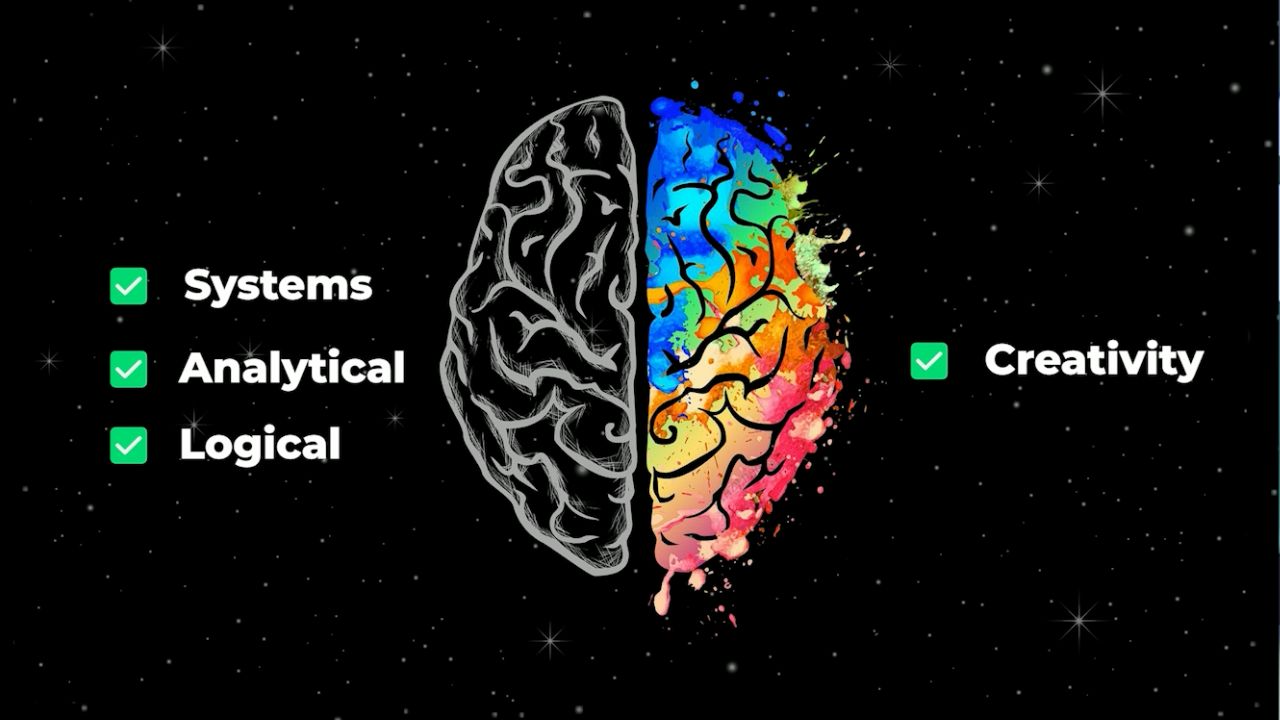
Why Most UGC Video Ads Fail
Here's the hard truth: most "UGC" isn't actually effective user-generated content—it's just unstructured video content with no proven framework behind it.
We regularly audit accounts where brands are spending $3,000-$5,000 behind single ads that are nothing more than:
- Organic TikTok trends with no sales angle
- Pretty branded videos that look nice but don't convert
- Random creator content with zero strategic direction
- Tutorial-style ads that focus on entertainment over conversion
- Brand videos without clear value propositions
The problem isn't creativity. The problem is the lack of a systematic approach.
When we compare user-generated content to traditional advertising, UGC consistently wins—but only when it's built on proven direct response foundations. The best marketers aren't necessarily the most creative people. They're the ones who can take creative ideas and constrain them into a proven, step-by-step system that delivers results every single time.
The 3-Step System for Winning Ads
After analyzing data from hundreds of social media video production campaigns that have supported 7-8 figure ad spends, we've identified a three-step system that consistently produces winners:
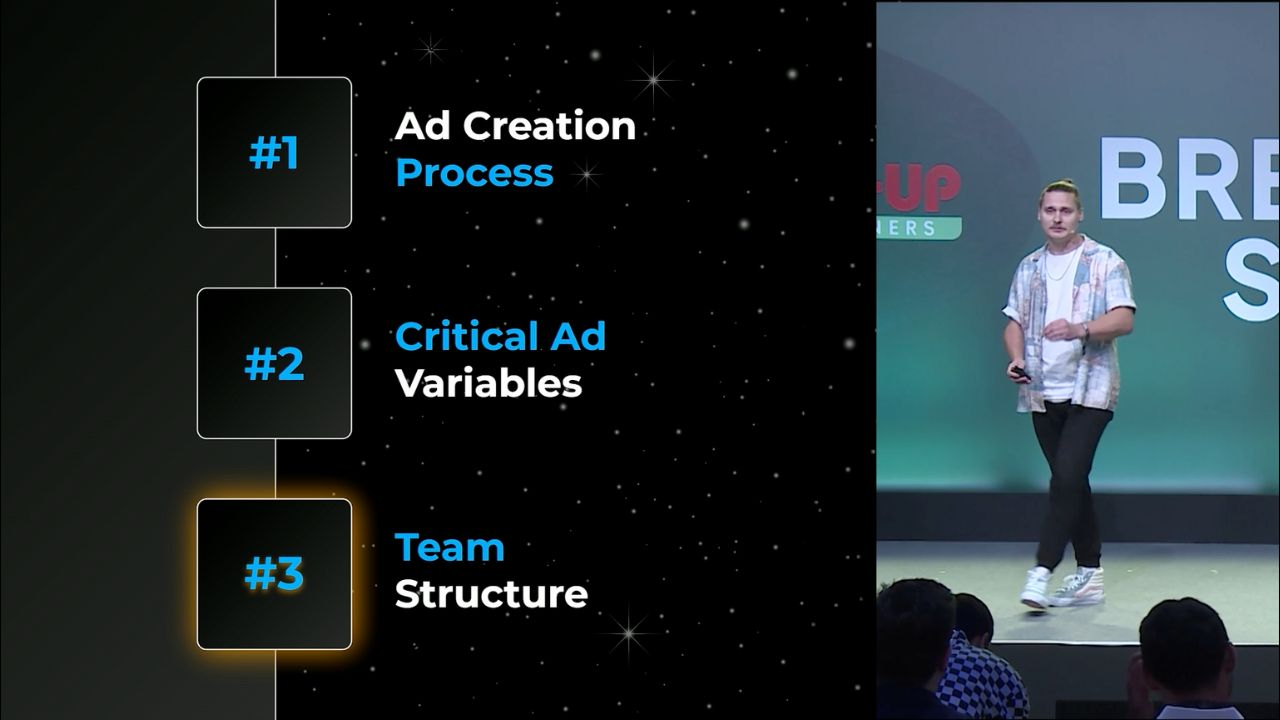
Step 1: Ad Creation Process
A-to-Z process for ideating and building ads that convert across industries—from beauty and cosmetics to health supplements.
Step 2: Critical Ad Variables
The four most important elements that determine success or failure, backed by comprehensive performance data.
Step 3: Team Structure
Whether you hire creators or build an internal team, the people and roles needed to execute at scale.
Let's dive deep into each step.
Step 1: Master the Ad Creation Process
The Foundation: Direct Response Principles
Here's something most people don't realize: the core psychological desires that drive people to buy haven't changed in 40+ years. What's changed is simply the medium.
We went from print (see) to radio (hear) to TV (see and hear) to now consuming short-form video content in the palm of our hands. But the fundamental direct response principles that worked in print ads from the 1980s, radio commercials, and TV infomercials still work today.
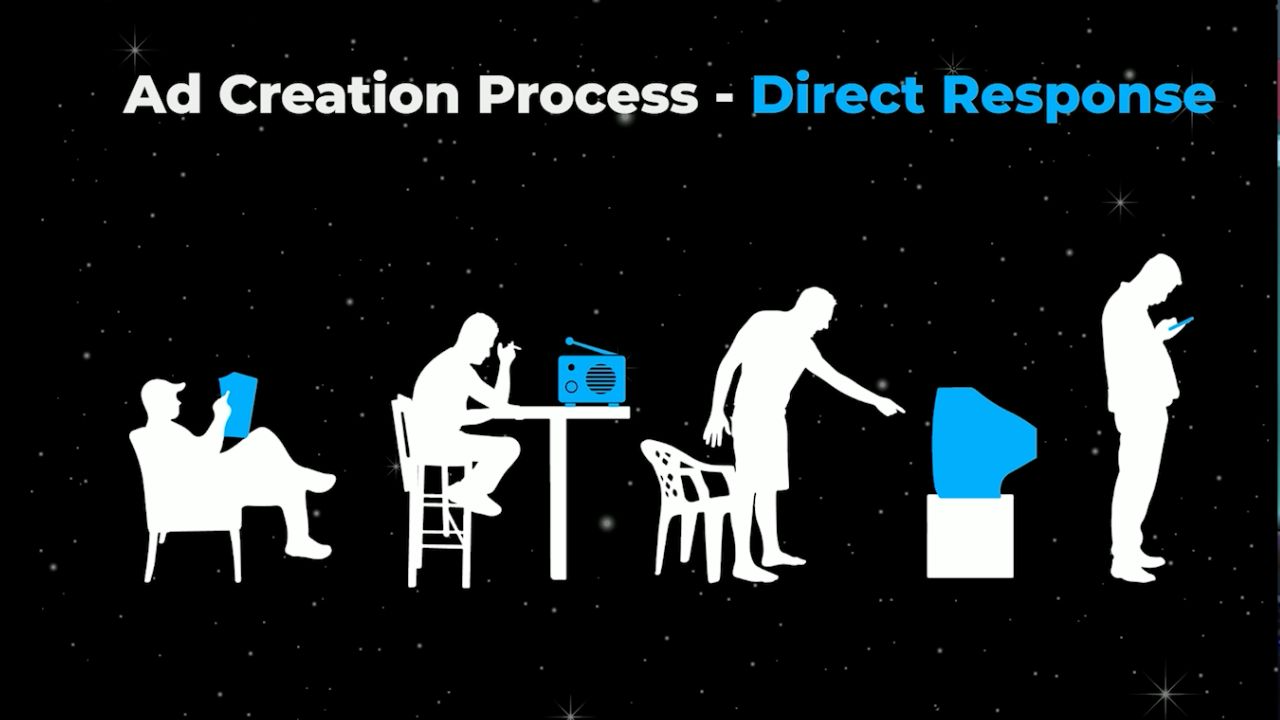
Some of the most powerful direct response principles for video optimization include:
- LF8 Core Desires - The 8 fundamental human desires that drive all purchasing decisions
- Intensification - Before/after demonstrations and "amazing demos"
- Anchoring - Setting price and value reference points
- Ego Morphing - Helping customers see their ideal self
- Fear Factor - Addressing pain points and consequences
- Belief Re-ranking - Shifting customer priorities and beliefs
Learn more about these principles in Eugene Schwartz's "Breakthrough Advertising" and Claude Hopkins' "Scientific Advertising".
The Sweet Spot: 6-8 Principles Per Ad
Our data shows that the highest-performing ecommerce video ads use 6-8 direct response principles in combination. This creates what we call a "mashup" effect where multiple psychological triggers work together.
Key insight: Using fewer than 6 principles leaves performance on the table. Using more than 8 makes the ad feel "too manufactured" and overly sales-y.
Intensification in Action
One of the most powerful principles is intensification—the before/after, amazing demo approach. Think of the classic ShamWow infomercials where Vince puts the product's claims to the test in a way anyone could replicate at home.
This works exceptionally well for:
- Skincare products showing visible improvements
- Fitness brands demonstrating results
- Health products proving efficacy claims
- Any product with demonstrable transformation
Step 2: Focus on the 4 Critical Variables
After analyzing performance data across all our client accounts, we identified four variables that have the biggest impact on ad performance:
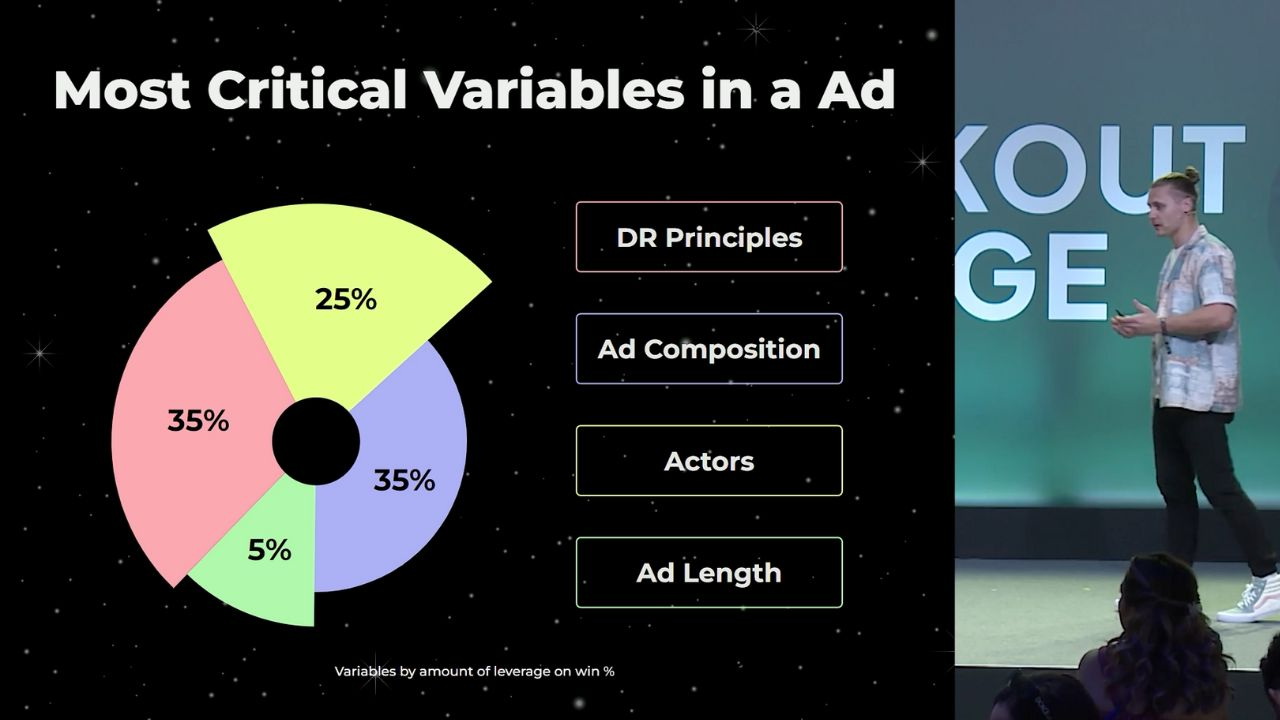
1. Direct Response Principles (35% of Success)
As mentioned above, the strategic application of 6-8 proven psychological principles creates the foundation for high-performing ads across all verticals.
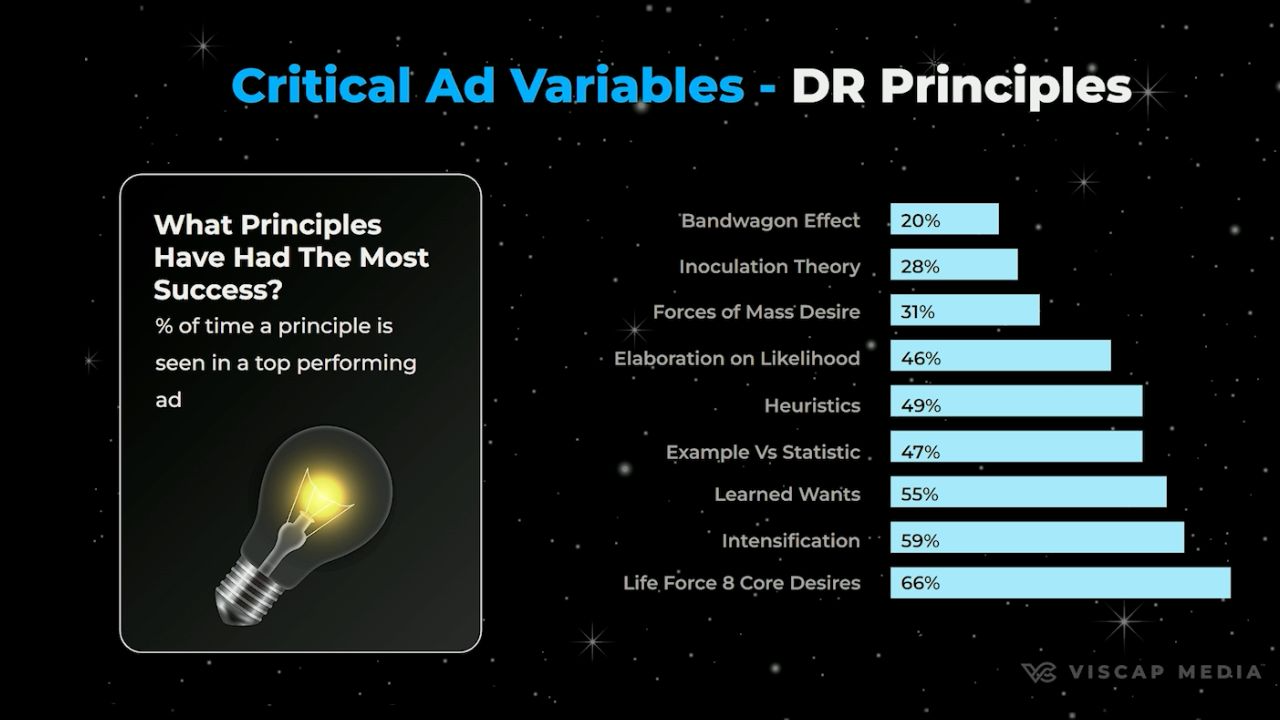
2. Ad Composition (35% of Success)
This covers all the visual elements: cuts, B-roll footage, face-to-camera shots, and overall visual flow.
Key finding: Ads with more B-roll footage and higher cut rates consistently outperform static face-to-camera content. We typically use only 1-2 face-to-camera clips in our highest performers, with the rest being action-focused B-roll paired with voiceover.
What is B-roll? Any footage showing actions, POV shots, close-ups, or wide shots—typically paired with voiceover rather than someone talking directly to camera. This is crucial for apparel and fashion brands where product demonstration is key.
3. Number of Actors (25% of Success)
Here's a counterintuitive finding: single-actor ads significantly outperform multi-actor ads.
Why? TikTok has changed how consumers perceive authentic content. Single-person videos feel genuine and authentic, while multi-actor productions feel more "assembled" and less trustworthy.
The authentic, iPhone-shot feeling of single-actor content resonates more with today's audiences than heavily produced multi-person ads. This is especially true for beauty and skincare brands where personal testimonials feel more credible.
4. Ad Length (5% of Success)
An ad should only be as long as it needs to be, but our data shows the sweet spot for direct response video ads is around 40 seconds.
You can control ad length by using frameworks with predetermined numbers of "elements" (2-4 second video segments).
Example: 10 elements × 4 seconds each = 40-second ad.
For more insights on optimal ad length, check out Facebook's Creative Best Practices guide.
Step 3: Build Your High-Performance Team
The Assembly Line Problem
Many agencies use an assembly line approach: creative strategist → copywriter → videographer → director → editor.
This doesn't work. The original vision gets lost in translation with each handoff, and the final product rarely matches the initial concept.
The Visionary Integrator Model
Instead, use a centralized approach with a Creative Strategist as the visionary who maintains the vision throughout the entire process.
Lean Team Structure (10 creatives/month)
Team composition:
- 1 Creative Strategist (handles ideation, copy, production, and final approval)
- 1 Senior Video Editor (focuses purely on editing)
This structure works well for smaller brands testing video ad strategies or getting started with social media video production.
Scaling Team Structure (25 creatives/month)
Team composition:
- 1 Creative Strategist
- 1 Copywriter (frees up strategist capacity)
- 1 Editing Director (manages quality across multiple editors)
- 2-3 Video Editors
Perfect for brands implementing comprehensive video marketing approaches across multiple product lines.
High-Volume Team Structure (50+ creatives/month)
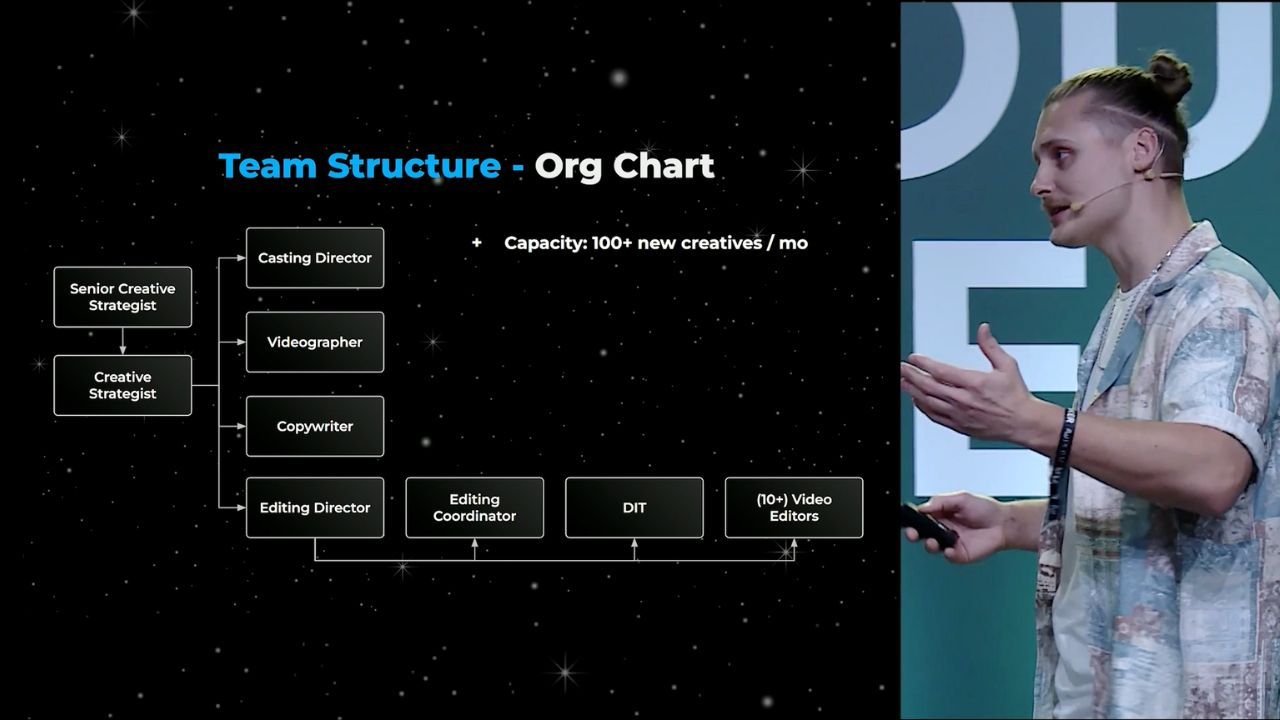
Team composition:
- 1 Senior Creative Strategist
- 1 Creative Strategist
- 1 Copywriter
- 1 Videographer (handles B-roll and some ad shoots)
- 1 DIT - Digital Imaging Technician (manages raw media and project files)
- 1 Editing Coordinator (assigns projects based on editor capacity)
- Multiple Video Editors
This is the structure used by top agencies and brands producing content at scale for holiday campaigns and seasonal promotions.
Learn more about building creative teams from Hubspot's Marketing Team Structure Guide.
Industry-Specific UGC Strategies
Beauty & Cosmetics
Beauty video ads and cosmetics marketing perform exceptionally well when they focus on transformation and real results. Tutorial-style ads work best when they blend education with product demonstration.
Key elements for beauty brands:
- Before/after transformations
- Step-by-step application tutorials
- Skin texture close-ups for skincare content
- Multiple lighting conditions to show true results
Fashion & Apparel
Fashion campaigns and clothing brand videos need to showcase fit, movement, and styling versatility. Apparel video marketing works best with:
- Multiple outfit styling options
- Movement and fabric flow demonstrations
- Size inclusivity and fit variety
- Real customer testimonials
Health & Wellness
Wellness content, health product videos, and supplement advertisements require credible proof and authentic testimonials:
- Scientific backing and ingredient spotlights
- Real customer transformation stories
- Expert endorsements when possible
- Clear before/after documentation
Fitness Brands
Fitness video marketing thrives on motivation and real results:
- Workout demonstrations with products
- Progress tracking and measurements
- Community and social proof elements
- Performance improvement metrics
Frameworks That Work Every Time
The "Needs to Have" Framework
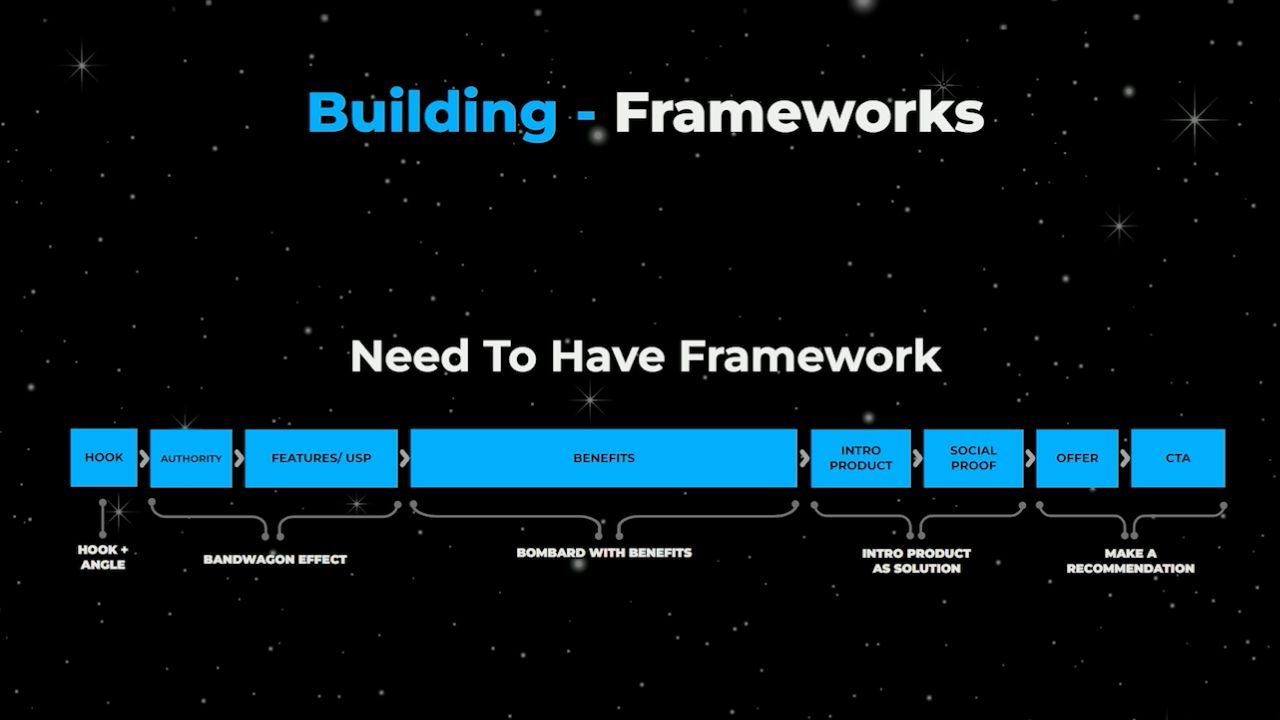
Every high-performing ad should include these elements:
- Hook - Attention-grabbing opener (first 3 seconds)
- Features - What the product does
- Benefits - What the customer gets
- Product Introduction - Clear product showcase
- Social Proof - Testimonials, reviews, or user examples
- Offer - Clear value proposition
- Call-to-Action - Specific next step
The UGC Demo Framework
One of our highest-performing frameworks follows this structure and works across industries:
- Strong hook with problem identification
- Product introduction with key features
- Amazing demo or before/after
- Benefits and social proof
- Clear offer and CTA
This framework typically runs 10 elements at 4 seconds each for a 40-second total length.
Seasonal Campaign Frameworks
For holiday content, Christmas marketing videos, and Black Friday advertisements, modify your core frameworks to include:
- Seasonal urgency and time-sensitive offers
- Holiday-specific pain points and solutions
- Gift-giving angles and recipient benefits
- Limited-time social proof and scarcity
Reference: Google's Holiday Marketing Playbook provides excellent seasonal strategy insights.
Agency vs Platform: What's Best for Your Business?
When evaluating agency versus platform options, consider these factors:
When to Choose a UGC Agency
Best for:
- You need comprehensive video ads with strategic direction
- Your team lacks social media video production experience
- You want access to proven frameworks and processes
- Video agency pricing fits your budget for comprehensive service
When to Build Internal Capabilities
Best for:
- You want to build an internal creative team for long-term control
- You have the resources to hire creators directly
- Your brand requires frequent content updates and iterations
- You prefer controlling the entire creative process
Hybrid Approach
Many successful brands combine both approaches:
- Partner with a video agency for strategy and frameworks
- Hire creators for ongoing content production
- Build internal teams for brand consistency and speed
Video Ad Optimization Best Practices
Successful video optimization requires continuous testing and refinement:
Testing Variables
- Hook variations in first 3 seconds
- Product demonstration angles
- Social proof formats and placement
- CTA phrasing and visual treatment
Performance Metrics
- Click-through rates by audience segment
- Cost per acquisition across ad variations
- Engagement rates and video completion
- Return on ad spend across different creative approaches
Seasonal Optimization
Plan content calendars around key periods:
- Holiday video campaigns for Q4 revenue spikes
- Black Friday advertisements for maximum conversion periods
- Christmas marketing content for gift-giving seasons
Learn more about video performance metrics from Meta's About video ad metrics.
Getting Started Today
Immediate Action Steps:
- Audit your current ads - Identify how many direct response principles each ad uses
- Analyze your B-roll ratio - Calculate percentage of B-roll vs face-to-camera footage
- Review actor count - Test single-actor ads against multi-actor versions
- Implement the "Needs to Have" framework - Use it for your next 3 test creatives
- Plan your team structure - Decide whether to hire UGC creators or work with agencies
The 30-Day Challenge
For the next month, commit to creating all new video ads using:
- 6-8 direct response principles per ad
- 70%+ B-roll footage with minimal face-to-camera
- Single actors only
- The "Needs to Have" framework
- Target 40-second length with 10 elements
Track your results against previous campaigns. We're confident you'll see at least a 30% improvement in testing hit rate.
Industry-Specific Implementation
Beauty brands: Start with skincare content and tutorial-style ads
Fashion brands: Focus on clothing videos and apparel marketing
Health brands: Develop wellness content and health product videos
Fitness brands: Create fitness marketing with transformation stories
For additional case studies and implementation guides, visit VisCap Case Studies Guide.
Ready to Scale Your Video Ad Success?
Creating winning user-generated video content isn't about luck or creativity—it's about following a proven system backed by millions in ad spend data.
The brands seeing 30% hit rates aren't necessarily more creative. They're more systematic. They understand that systematizing the creative process is the key to predictable, scalable results.
Whether you're a 7-figure ecommerce brand looking to build an internal creative team or an agency wanting to improve client results, this system works. We've used it to help brands across industries produce 150+ unique video ads monthly with consistent winners.
The framework is proven, the data is clear, and the results speak for themselves. It's time to stop guessing and start systematically creating winning video ads that drive real revenue.
According to eMarketer's Digital Ad Spending Report, video advertising spending continues to grow at 15% annually, making this the perfect time to master these strategies.
Ready to implement this system in your business? The strategies outlined in this guide have been tested across millions in ad spend and proven to work for brands of all sizes. Start with the 30-day challenge above and begin systematically improving your video ad performance today.
Join The Dark Side Of Video Ads

